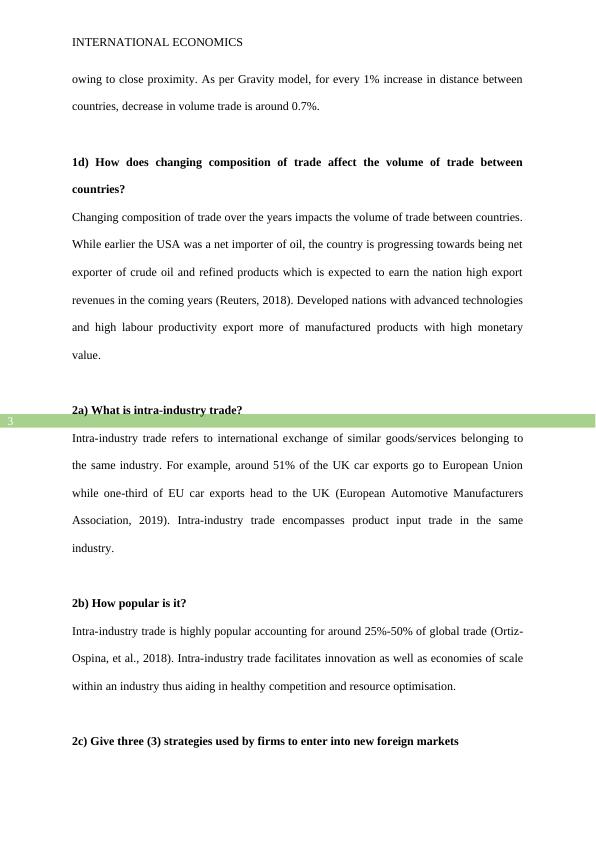International Economics
This discussion focuses on exchange rates, foreign exchange market, basics of exchange rates, exchange rates and the prices of goods, the foreign exchange markets, and the demand of currency and other assets.
7 Pages1351 Words408 Views
Added on 2022-11-25
About This Document
This document provides an overview of international economics, covering topics such as global trade, factors affecting trade between countries, intra-industry trade, strategies for entering foreign markets, import-substitution industrialization, and more. It discusses the concept of global trade, reasons for countries to trade with each other, factors affecting trade according to the gravity model, the impact of changing composition of trade on trade volume, intra-industry trade and its popularity, strategies used by firms to enter foreign markets, dumping pricing policy, import-substitution industrialization, the infant industry argument, and potential problems with adopting import-substitution industrialization. References are provided for further reading.
International Economics
This discussion focuses on exchange rates, foreign exchange market, basics of exchange rates, exchange rates and the prices of goods, the foreign exchange markets, and the demand of currency and other assets.
Added on 2022-11-25
ShareRelated Documents
End of preview
Want to access all the pages? Upload your documents or become a member.
World’s leading Exporters
|9
|1523
|24
Industry and Trade in Asia
|9
|2079
|11
Factor Endowment Theory and Trade Patterns of Saudi Arabia and USA
|6
|1726
|259
Strategic Management and Leadership
|5
|1234
|393
Global Economic Assignment: Trade Protection of USA Against China and Factors Influencing Cross Border Merger and Acquisition
|10
|3320
|444
USA's Economic Performance from 2008 to 2018
|13
|2830
|341



